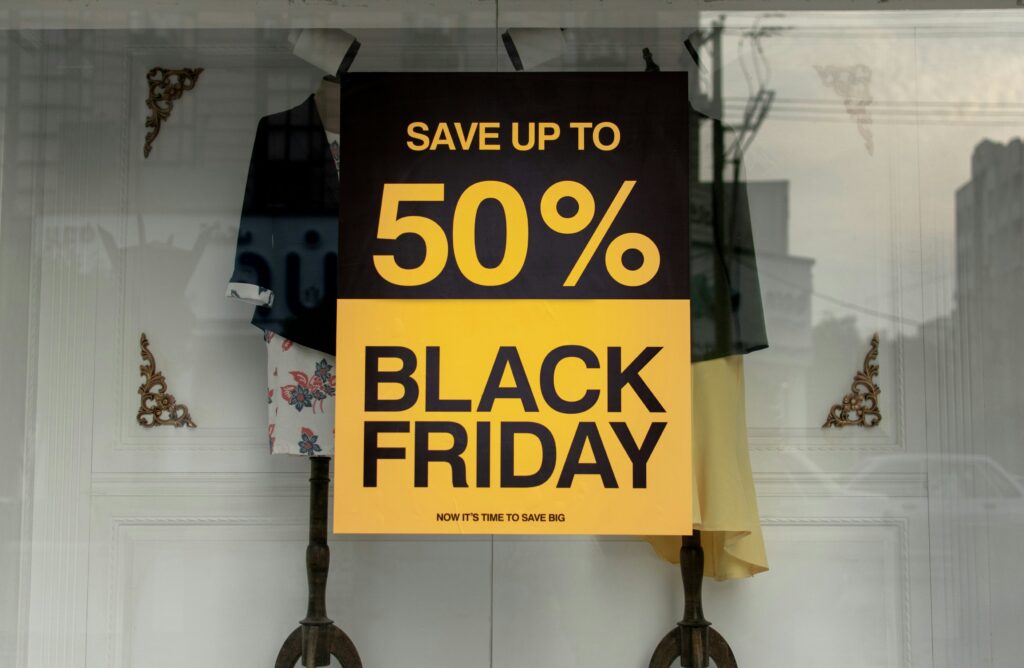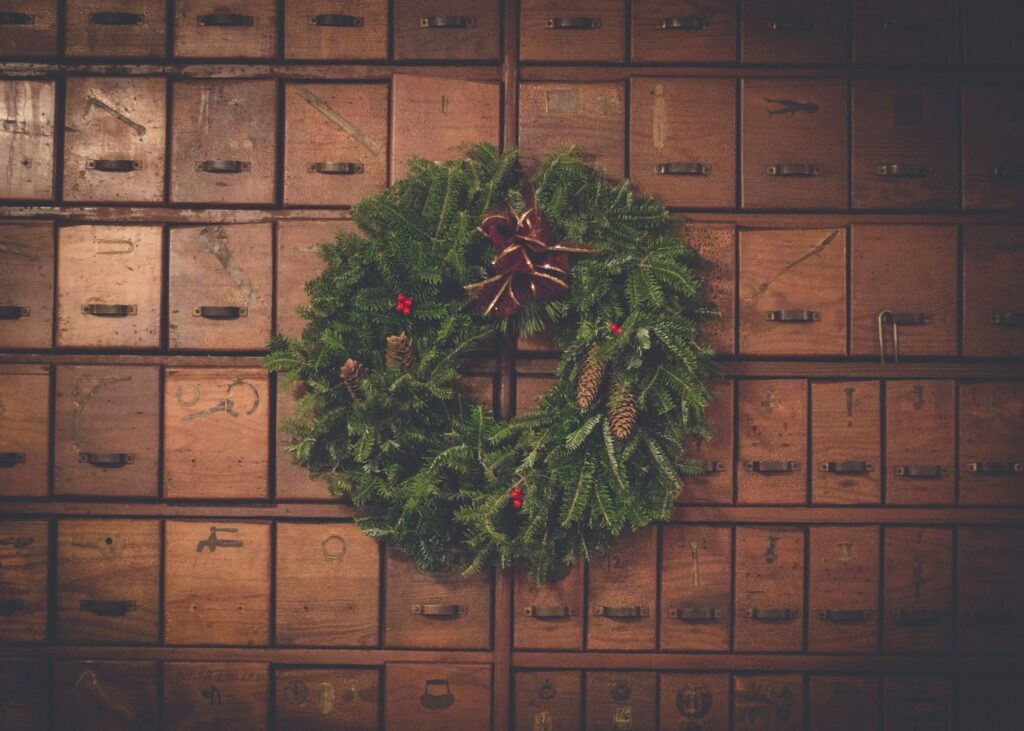
Holiday Email Marketing: 5 Steps to Boost Your Festive Campaigns
Picture this: Your competitor just sent out their Christmas email marketing campaign to a pristine, segmented email list while you’re about to blast 50,000 subscribers with a generic “Season’s Greetings” message, including thousands of inactive addresses that will tank your email deliverability rates. The difference between these two holiday marketing strategies?
One will generate record-breaking revenue, while the other might actually harm your email reputation and cost you money. With holiday email volume increasing by 400% during peak season, preparation isn’t just important—it’s the difference between thriving and barely surviving.
The harsh reality is that most businesses lose up to 40% of their potential holiday revenue simply because they skip the foundational steps that make email campaigns actually work. They focus on crafting the perfect subject line while ignoring the fact that their emails might never reach the inbox in the first place. This comprehensive guide will walk you through the five essential steps that separate successful holiday email campaigns from expensive failures.
Holiday email list cleaning: the foundation of holiday email success
Before you even think about writing your first holiday email, you need to confront an uncomfortable truth about your subscriber list. That impressive number you proudly display on your dashboard? It’s likely inflated with dead weight that’s actively sabotaging your campaigns. Email list hygiene isn’t glamorous, but it’s the foundation that determines whether your carefully crafted messages reach engaged customers or disappear into digital oblivion. But where to start?

The first culprit destroying your holiday email marketing performance is inactive subscribers. These are people who haven’t engaged with your emails for 180 days or more, yet they’re still receiving every message you send. Each unengaged recipient tells email providers that your seasonal email campaigns aren’t valuable, which gradually pushes your future emails toward spam folders. The solution requires courage: remove these inactive users, even though watching your subscriber count drop feels counterintuitive, but trust us it will benefit you in the long run. Maileon’s built-in filter function makes this process straightforward, automatically identifying subscribers based on engagement patterns.
Do you have multiple lists, and you don’t have time to filter out all the issues? Then using a tool like the Maileon address Checker might be more suitable for you. It automatically identifies and removes problematic addresses before they cause delivery issues, such as invalid email addresses, typos, and abandoned domains. You’ll get a detailed report of all your addresses, so you know exactly what you are cutting out.
If you really don’t want to part ways with your inactive users, there is one more thing you can try before you delete them entirely. Create one last reactivation campaign, a final “we miss you”. This re-engagement attempt might surprise you with some supposedly dead subscribers suddenly springing back to life. The key is making this email feel personal rather than desperate, focusing on the value they’ll miss rather than what you need from them.
Now you have a clean list, what’s next? Split it up into multiple lists, also known as segmentation. Group your subscribers by interest, location, gender, or any other relevant factor for your industry. A good place to start might simply be engagement levels. Create a VIP segment for your most engaged subscribers—these are the people who open emails within hours and frequently make purchases. They deserve exclusive content and early access to your best holiday offers. Meanwhile, lukewarm subscribers need different treatment, perhaps requiring more educational content before they’re ready for promotional messages.

Last but not least, something that is often overlooked is the preference centre! It can become a powerful tool for both list cleaning and subscriber intelligence. Instead of guessing what your audience wants to receive, simply ask them. Update your preference centre to include holiday-specific options: frequency preferences, content types, and even gift guide categories they’re interested in. This approach not only reduces unsubscribe rates but also provides valuable data for personalisation efforts.
Email marketing automation flows for holiday campaigns
Manual holiday email campaigns are like managing Black Friday inventory with a spreadsheet—technically possible, but unnecessarily complicated and prone to costly errors. Smart automation can increase your holiday revenue by 300% compared to one-off campaigns, yet many businesses still approach their busiest season with a purely manual strategy. The beauty of automation lies not just in efficiency, but in delivering the right message at precisely the right moment in each customer’s journey.
With automations, it’s better to get an early start. There are two approaches you can take: you can focus your efforts on making a great holiday campaign with multiple emails, segmentation and personalisation, or you can focus on evergreen automation flows that will benefit your business around and beyond the holiday campaign.
A holiday campaign can go in many directions. You might already have discussed with your sales team which items you want to discount, promote, or highlight. Or perhaps this year, your goal is to capture as many new clients as possible. Whatever the goal, it’s always smart to lay it out before you start building an automation. Knowing who you are targeting and what you want to achieve will allow you to design the best holiday campaign. Popular email marketing automation flows for Christmas email marketing and Black Friday email campaigns include:
- Welcome series that immediately provides holiday gift guide emails and gift inspiration
- Abandoned cart flows that add urgency during a competitive shopping period like Cyber Monday.
- VIP customer workflows that reward your best buyers with exclusive early access.
- Behavioural triggers like Advent Calendar emails or holiday email gamification strategies that follow up when someone downloads a gift guide.
Email list hygiene isn’t glamorous, but it’s the foundation that determines whether your carefully crafted messages reach engaged customers or disappear into digital oblivion.
If you haven’t got any automation flows set up, then creating evergreen automation flows might be a better approach for you. You’ll be able to combine a one-time holiday email campaign with the support of other automations you can use all year round.
Need help implementing these email marketing automation strategies? Maileon’s platform makes it easy to create mobile-optimised holiday email campaigns, from Christmas email marketing to Black Friday email blasts, with built-in AI-powered email personalisation that helps you stand out during peak season. If inspiration is what you are looking for, look no further.
- Post-purchase flows are a must: the period immediately after a sale is when customers are most engaged, making it the perfect time to ask for reviews, recommend related products, or introduce a loyalty program.
- Re-engagement campaigns are another evergreen winner, automatically identifying subscribers showing declining engagement and tempting them back with tailored offers or a simple frequency adjustment in their preferences.
The key to successful automation lies in testing and refinement. Start simple, monitor results, and gradually add complexity as you learn. Automation should feel personal and helpful, never robotic or pushy.

Improve holiday email deliverability: avoid the spam folder
Your beautifully designed holiday campaign is worthless if it never reaches the inbox. During November and December, inbox providers are under pressure to filter out the flood of promotions, and even legitimate senders can see 20–30% of their emails wrongly classified as spam. Deliverability isn’t just a technical concern; it’s the foundation of your campaign’s visibility.
One of the most common mistakes is sending sudden spikes in volume. If you normally send 5,000 emails a week and suddenly push 50,000, providers treat this as suspicious behaviour. A gradual warm-up, increasing volume by around a quarter each week, signals consistency and earns trust. Equally important is protecting your sender reputation, which functions much like a credit score. A strong reputation ensures your emails glide into inboxes; a weak one means even genuine messages get filtered out. Free monitoring tools can alert you when your reputation dips, giving you time to take corrective action before peak season slips away.
Standing out requires more than louder proclamations of “BIGGEST SALE EVER”—it demands creativity, timing, and genuine value that cuts through promotional noise
Authentication protocols are another non-negotiable. Think of SPF, DKIM, and DMARC as digital passports: they verify that your emails really come from you and haven’t been tampered with along the way. Without them, inbox providers have little reason to trust you. Maileon users benefit from pre-configured authentication, but if you’re on another platform, make sure these records are properly set up well before December.
Content also plays a role. Spam filters are smarter than they used to be, but phrases like “FREE!!!” or “BUY NOW” still raise red flags. Keep your language persuasive but professional, and always preview your campaigns across major providers such as Gmail, Outlook, Yahoo, and Apple Mail. What looks great in one client’s inbox may break in another. Finally, don’t forget that your engagement metrics feed back into deliverability. High bounce rates, low opens, and spam complaints tell providers your audience doesn’t value your messages. That’s why keeping your list clean and engaged, as we covered in Step One, is so crucial.
Deliverability may feel invisible compared to design or copy, but it’s the invisible hand that decides whether your campaign drives sales or disappears into the void.
Holiday email personalisation strategies to boost conversions
Generic holiday email templates perform like generic holiday gifts—they’re forgettable, unremarkable, and often unwanted. The difference between a standard “Dear Customer” message and personalised holiday emails isn’t subtle; it can be the gap between a 2% open rate and nearly 20%. In the busiest season of the year, email personalisation becomes the differentiator that transforms browsers into buyers.
The most powerful form of personalisation comes from dynamic product recommendations. By analysing browsing history, purchase patterns, or similar customer behaviour, you can highlight items that feel like curated suggestions instead of random promotions. The “people like you bought” approach works because it combines social proof with relevance, giving subscribers the sense of a personal shopping assistant. Geographic personalisation can add another level. A message promising “two-day delivery to Manchester” creates urgency and trust in a way that “fast shipping available” never will. Even weather-based recommendations can feel delightfully personal—promoting umbrellas in rainy London or winter coats during a snowy week.
Personalisation is what makes your brand relevant in that chaos, turning emails from noise into meaningful conversations.
Behavioural triggers are equally effective. A generic abandoned cart reminder may get ignored, but one that references the exact products left behind often converts. Similarly, if someone browses a category without buying, following up with a buying guide or related suggestions shows you’re paying attention. This is where segmentation becomes powerful. First-time buyers may need reassurance and education, while repeat customers can be rewarded with loyalty perks or more direct offers. High-value customers, your VIPs, deserve early access and exclusive deals that make them feel truly appreciated.
Some businesses are pushing further with AI-driven personalisation, adjusting not only what content people see, but when and how they see it. From customised subject lines to optimal send times, these tools (something Maileon users already benefit from) can create messages that feel uniquely tailored. But the principle remains the same: use personalisation to make life easier for the customer, not to show off how much you know about them. Done right, it feels like service. Done wrong, it feels creepy.
Holiday shoppers are already overwhelmed with choices. Personalisation is what makes your brand relevant in that chaos, turning emails from noise into meaningful conversations.

Stand out with festive holiday email examples and templates
The average person receives 121 emails daily during the holiday season, making inbox competition more intense than Black Friday shopping crowds. Your perfectly optimised, personalised email competes with 120 other messages, most of which promise sales, discounts, and limited-time offers. Standing out requires more than louder proclamations of “BIGGEST SALE EVER”—it demands creativity, timing, and genuine value that cuts through promotional noise.
What’s the game plan? Start with these curiosity-driven holiday email subject lines examples that spark immediate interest. Instead of straightforward promotional language like “Holiday Sale – 50% Off Everything,” consider intriguing Christmas email subject line ideas like
- “The gift that made our CEO cry”
- “Why we’re giving away our bestseller”
These festive email examples create psychological tension that can only be resolved by opening the email. The key is ensuring that your email content delivers on the curiosity you’ve created.
Timing also matters more than many marketers realise. While weekdays are the traditional choice, don’t be afraid to test evenings, weekends, or even last-minute countdown emails. Consumers check their inboxes at all hours during the last two months of the year, often while juggling shopping, travel, and social events. Meeting them where they are can give you an edge.
Creativity is another way to grab attention. Interactive elements like countdown timers or dynamic recommendations can make your emails feel fresh and engaging. Just be sure they work smoothly on both desktop and mobile—technical glitches are the fastest way to lose trust. Story-driven content makes your brand memorable and provides context that makes promotional content feel natural rather than intrusive. Opening emails with engaging scenarios, customer success stories, or behind-the-scenes glimpses creates an emotional connection before introducing products or offers.
Finally, don’t underestimate the power of sequence. Instead of a single big holiday blast, consider building anticipation through a series: a teaser, a reveal, and a final reminder. This creates momentum and keeps your brand top of mind. Your holiday email success depends not on shouting louder than competitors, but on providing genuine value that customers actively seek.
Wrapping up
Holiday email marketing best practices aren’t about sending more; it’s about sending smarter. By mastering email list cleaning, setting up marketing automation flows, improving email deliverability, implementing email personalisation strategies, and creating standout seasonal email campaigns, you give your brand the best chance of cutting through the noise. Whether you’re planning Christmas email marketing, Black Friday emails, or Cyber Monday campaigns, each step builds on the other, creating campaigns that not only win in December but strengthen your customer relationships well into the new year.
Have you read these blogs yet?
-
Holiday Email Marketing: 5 Steps to Boost Your Festive Campaigns
Discover the 5 steps that separate successful holiday email marketing campaigns from expensive festive email failures
-
No-reply emails are (not) the answer
No-reply emails are (not) the answer
-
DOI reminders: essential or excessive?
When it comes to email marketing, the double opt-in (DOI) process remains a core pillar for establishing trust with your subscribers.

Let’s talk!
Whether you’re looking for a new platform, a partnership or just want to have a cup of coffee and a chat: we’d love to hear from you.
